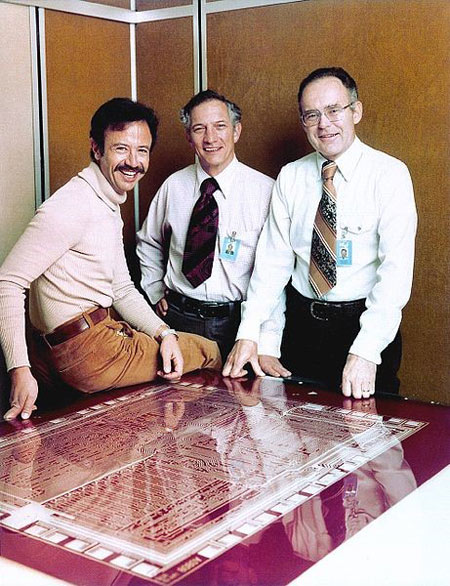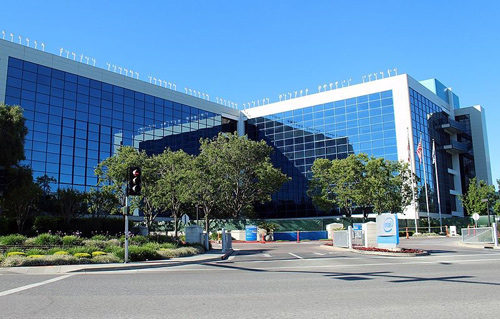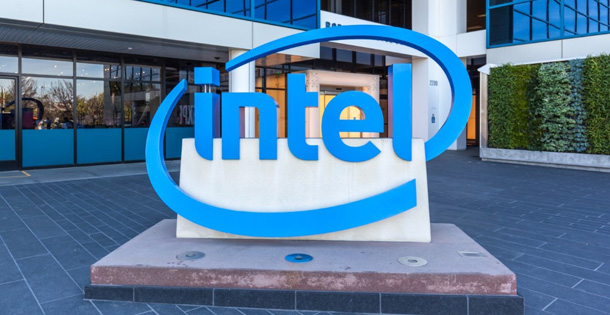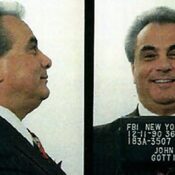If it’s what inside that counts, then they’ve been among the most important counters for 50 years. On this day in 1968, Intel launched in Mountain View, California. Makers of processors, integrated circuits, and much more, Intel creates products that can be found in most American homes (even if you don’t realize it).
Founders Gordon Moore and Robert Noyce left Fairchild Semiconductor in 1968 with a vision of forming their own company. Moore was a chemist and Noyce a physicist and a co-inventor of the integrated circuit (essentially the microchip). Their third employee, chemical engineer Andy Grove, would prove a key figure in Intel’s later development.
Their primary goal was to conquer the “semiconductor memory market”; they wanted to shift how computers stored and accessed data, from magnetic-core memory to semiconductors. By 1972, Intel — a shortening of “integrated electronics” — had the best-selling memory chip in the world with its 1103 model, properly called a dynamic random-access memory integrated circuit.

Intel caught fire in the ’80s by supplying microprocessors to computers manufactured by other companies. The IBM personal computer used Intel, as did several of IBM’s competitors. Moore decided to further reconfigure the business to focus on supplying hardware and processors to other companies, and they boomed. In 1991, Intel began marketing themselves with the phrase “Intel Inside,” reminding consumers that, for so many different brands of computers, Intel processors were what made them work. The ads and labeling became so pervasive that Intel became a widely known brand in the ’90s. Many of the PCs and laptops you see every day come adorned with that Intel sticker, and the tones from their commercials have become immediately recognizable.
https://www.youtube.com/watch?v=nk5nSZRF4Yo
The familiar tones of an Intel ad.
To fully understand Intel’s impact, take a look at the figures. At the end of its first year in business in 1972, Intel had earned $2,672 in revenue; in 1997, it pulled in more than $20 billion. Part of the success can be attributed to “third man” Andy Grove. Grove become the CEO in 1987 and helped shepherd the company through some of its periods of largest growth. He pushed for innovation and open communication even as he suggested that workplace paranoia about your position and comfort were healthy; he even wrote a management book called Only the Paranoid Survive in 1996. Grove also advocated strongly for keeping tech jobs in the United States.

Though it has had a few slower sales years in its history, Intel can never be counted out. The company reorganized in 2005 to better deal with the innovations and devices emerging in mobile, entertainment, and other digital verticals. Their Core micorarchitecture processor design, which debuted in 2006, brought further success. The past few years have seen Intel acquire a number of familiar companies, including McAfee, SySDSoft, and Altera, as it continues to expand its offerings and involvement in areas like smart glasses, AI, and chips with internet connection capability.
In 2017, Intel delivered a record year of revenue. According to a fourth-quarter report, its “record fourth-quarter revenue was $17.1 billion and record full-year revenue was $62.8 billion.” For a company built on something so small, it appears that Intel will only get bigger than ever.
Become a Saturday Evening Post member and enjoy unlimited access. Subscribe now



